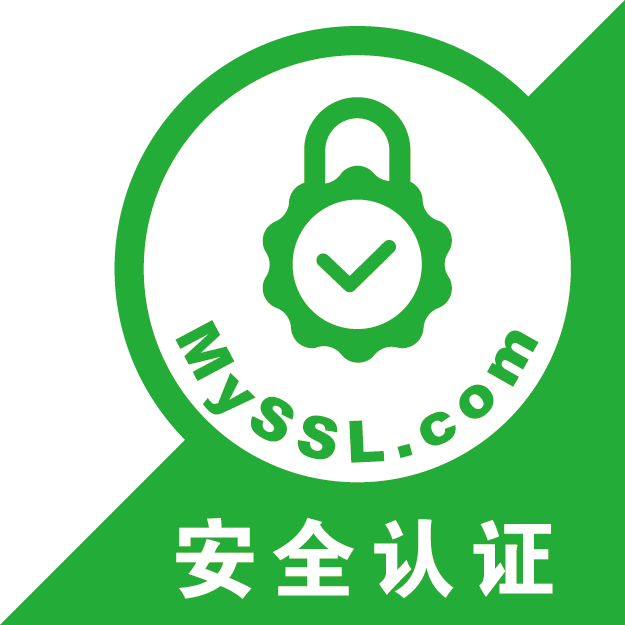asp程序开发中常用的几种代码技巧
1. 打开新的窗口并传送参数:
传送参数:
response.write(“<script>window.open(‘*.aspx?id=”+this.DropDownList1.SelectIndex+”&id1=”+…+”‘)</script>”)
接收参数:
string a = Request.QueryString(“id”);
string b = Request.QueryString(“id1”);
2.
为按钮添加对话框
Button1.Attributes.Add(“onclick”,”return confirm(‘确认?’)”);
button.attributes.add(“onclick”,”if(confirm(‘are you sure…?’)){return true;}else{return false;}”)
3.
删除表格选定记录
int intEmpID = (int)MyDataGrid.DataKeys[e.Item.ItemIndex];
string deleteCmd = “DELETE from Employee where emp_id = ” + intEmpID.ToString()
4.
删除表格记录警告
private void DataGrid_ItemCreated(Object sender,DataGridItemEventArgs e)
{
switch(e.Item.ItemType)
{
case ListItemType.Item :
case ListItemType.AlternatingItem :
case ListItemType.EditItem:
TableCell myTableCell;
myTableCell = e.Item.Cells[14];
LinkButton myDeleteButton ;
myDeleteButton = (LinkButton)myTableCell.Controls[0];
myDeleteButton.Attributes.Add(“onclick”,”return confirm(‘您是否确定要删除这条信息’);”);
break;
default:
break;
}
}
5.点击表格行链接另一页
private void grdCustomer_ItemDataBound(object sender, System.Web.UI.WebControls.DataGridItemEventArgs e)
{
//点击表格打开
if (e.Item.ItemType == ListItemType.Item || e.Item.ItemType == ListItemType.AlternatingItem)
e.Item.Attributes.Add(“onclick”,”window.open(‘Default.aspx?id=” + e.Item.Cells[0].Text + “‘);”);
}
双击表格连接到另一页
在itemDataBind事件中
if(e.Item.ItemType == ListItemType.Item || e.Item.ItemType == ListItemType.AlternatingItem)
{
string OrderItemID =e.item.cells[1].Text;
…
e.item.Attributes.Add(“ondblclick”, “location.href=’../ShippedGrid.aspx?id=” + OrderItemID + “‘”);
}
双击表格打开新一页
if(e.Item.ItemType == ListItemType.Item || e.Item.ItemType == ListItemType.AlternatingItem)
{
string OrderItemID =e.item.cells[1].Text;
…
e.item.Attributes.Add(“ondblclick”, “open(‘../ShippedGrid.aspx?id=” + OrderItemID + “‘)”);
}
6.表格超连接列传递参数
<asp:HyperLinkColumn Target=”_blank” headertext=”ID号” DataTextField=”id” NavigateUrl=”aaa.aspx?id=’
<%# DataBinder.Eval(Container.DataItem, “数据字段1”)%>’ & name=’<%# DataBinder.Eval(Container.DataItem, “数据字段2”)%>’ />
7.
表格点击改变颜色
if (e.Item.ItemType == ListItemType.Item ||e.Item.ItemType == ListItemType.AlternatingItem)
{
e.Item.Attributes.Add(“onclick”,”this.style.backgroundColor=’#99cc00′;
this.style.color=’buttontext’;this.style.cursor=’default’;”);
}
写在DataGrid的_ItemDataBound里
if (e.Item.ItemType == ListItemType.Item ||e.Item.ItemType == ListItemType.AlternatingItem)
{
e.Item.Attributes.Add(“onmouseover”,”this.style.backgroundColor=’#99cc00′;
this.style.color=’buttontext’;this.style.cursor=’default’;”);
e.Item.Attributes.Add(“onmouseout”,”this.style.backgroundColor=”;this.style.color=”;”);
}
8.关于日期格式
日期格式设定
DataFormatString=”{0:yyyy-MM-dd}”
我觉得应该在itembound事件中
e.items.cell[“你的列”].text=DateTime.Parse(e.items.cell[“你的列”].text.ToString(“yyyy-MM-dd”))
9.获取错误信息并到指定页面
不要使用Response.Redirect,而应该使用Server.Transfer
e.g
// in global.asax
protected void Application_Error(Object sender, EventArgs e) {
if (Server.GetLastError() is HttpUnhandledException)
Server.Transfer(“MyErrorPage.aspx”);
//其余的非HttpUnhandledException异常交给ASP.NET自己处理就okay了 🙂
}
Redirect会导致post-back的产生从而丢失了错误信息,所以页面导向应该直接在服务器端执行,这样就可以在错误处理页面得到出错信息并进行相应的处理
10.清空Cookie
Cookie.Expires=[DateTime];
Response.Cookies(“UserName”).Expires = 0
11.
自定义异常处理
//自定义异常处理类
using System;
using System.Diagnostics;
namespace MyAppException
{
/// <summary>
/// 从系统异常类ApplicationException继承的应用程序异常处理类。
/// 自动将异常内容记录到Windows NT/2000的应用程序日志
/// </summary>
public class AppException:System.ApplicationException
{
public AppException()
{
if (ApplicationConfiguration.EventLogEnabled)LogEvent(“出现一个未知错误。”);
}
public AppException(string message)
{
LogEvent(message);
}
public AppException(string message,Exception innerException)
{
LogEvent(message);
if (innerException != null)
{
LogEvent(innerException.Message);
}
}
//日志记录类
using System;
using System.Configuration;
using System.Diagnostics;
using System.IO;
using System.Text;
using System.Threading;
namespace MyEventLog
{
/// <summary>
/// 事件日志记录类,提供事件日志记录支持
/// <remarks>
/// 定义了4个日志记录方法 (error, warning, info, trace)
/// </remarks>
/// </summary>
public class ApplicationLog
{
/// <summary>
/// 将错误信息记录到Win2000/NT事件日志中
/// <param name=”message”>需要记录的文本信息</param>
/// </summary>
public static void WriteError(String message)
{
WriteLog(TraceLevel.Error, message);
}
/// <summary>
/// 将警告信息记录到Win2000/NT事件日志中
/// <param name=”message”>需要记录的文本信息</param>
/// </summary>
public static void WriteWarning(String message)
{
WriteLog(TraceLevel.Warning, message);
}
/// <summary>
/// 将提示信息记录到Win2000/NT事件日志中
/// <param name=”message”>需要记录的文本信息</param>
/// </summary>
public static void WriteInfo(String message)
{
WriteLog(TraceLevel.Info, message);
}
/// <summary>
/// 将跟踪信息记录到Win2000/NT事件日志中
/// <param name=”message”>需要记录的文本信息</param>
/// </summary>
public static void WriteTrace(String message)
{
WriteLog(TraceLevel.Verbose, message);
}
/// <summary>
/// 格式化记录到事件日志的文本信息格式
/// <param name=”ex”>需要格式化的异常对象</param>
/// <param name=”catchInfo”>异常信息标题字符串.</param>
/// <retvalue>
/// <para>格式后的异常信息字符串,包括异常内容和跟踪堆栈.</para>
/// </retvalue>
/// </summary>
public static String FormatException(Exception ex, String catchInfo)
{
StringBuilder strBuilder = new StringBuilder();
if (catchInfo != String.Empty)
{
strBuilder.Append(catchInfo).Append(“rn”);
}
strBuilder.Append(ex.Message).Append(“rn”).Append(ex.StackTrace);
return strBuilder.ToString();
}
/// <summary>
/// 实际事件日志写入方法
/// <param name=”level”>要记录信息的级别(error,warning,info,trace).</param>
/// <param name=”messageText”>要记录的文本.</param>
/// </summary>
private static void WriteLog(TraceLevel level, String messageText)
{
try
{
EventLogEntryType LogEntryType;
switch (level)
{
case TraceLevel.Error:
LogEntryType = EventLogEntryType.Error;
break;
case TraceLevel.Warning:
LogEntryType = EventLogEntryType.Warning;
break;
case TraceLevel.Info:
LogEntryType = EventLogEntryType.Information;
break;
case TraceLevel.Verbose:
LogEntryType = EventLogEntryType.SuccessAudit;
break;
default:
LogEntryType = EventLogEntryType.SuccessAudit;
break;
}
EventLog eventLog = new EventLog(“Application”, ApplicationConfiguration.EventLogMachineName, ApplicationConfiguration.EventLogSourceName );
//写入事件日志
eventLog.WriteEntry(messageText, LogEntryType);
}
catch {} //忽略任何异常
}
} //class ApplicationLog
}
转载请注明:代码学堂>编程开发 > ASP.NET > asp程序开发中常用的几种代码技巧
2. 本站不保证所提供所有下载的资源的准确性、安全性和完整性,资源仅供下载学习之用!如有链接无法下载、失效或广告,请联系客服处理,有奖励!
3. 您必须在下载后的24个小时之内,从您的电脑中彻底删除上述内容资源!如用于商业或者非法用途,与本站无关,一切后果请用户自负!
4. 如果您也有好的资源或教程,您可以投稿发布,成功分享后有RB奖励和额外RMB收入!
磊宇堂正在使用的服务器 维护管理由磊宇云服务器提供支持
磊宇堂 » asp程序开发中常用的几种代码技巧






